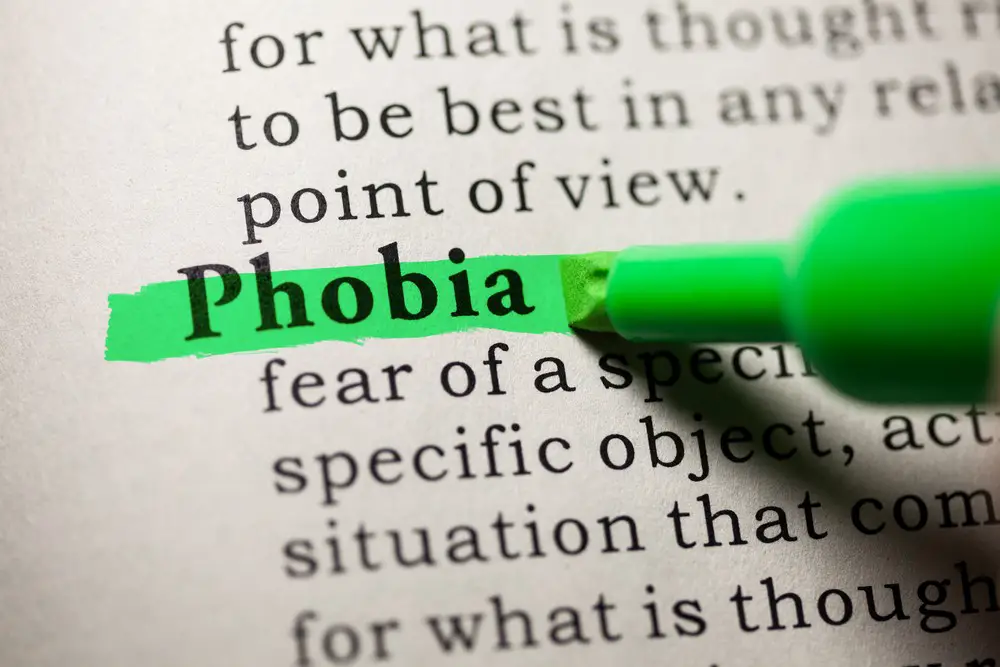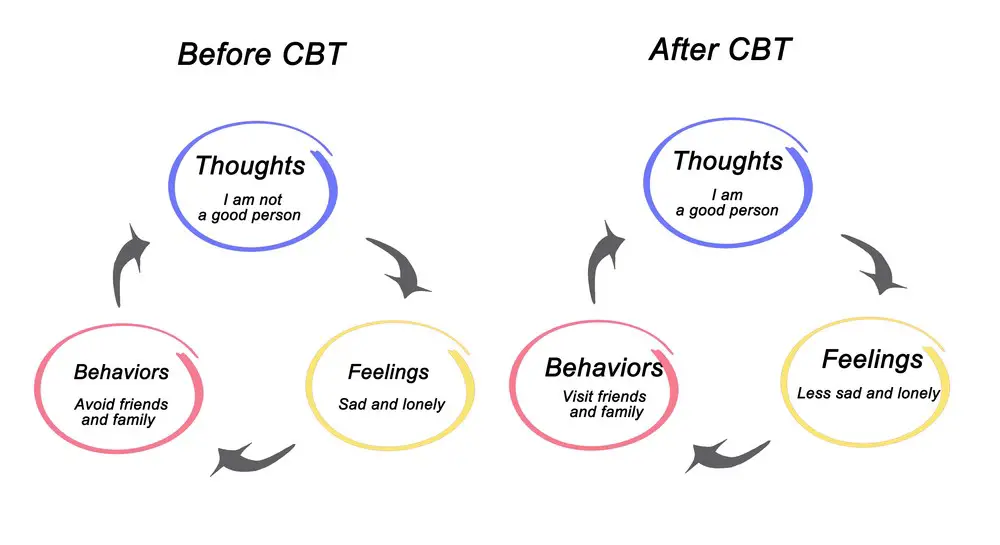The irrational fear of human-like figures is known as automatonophobia. Derived from two Greek words, automatos or autos, meaning self-acting, and phobos, meaning fear, the condition typically results from a shocking or traumatic event in childhood.
While it’s not unusual for people to feel uncomfortable around human-like figures like wax figures, dolls, mannequins, automatons, humanoid robots, etc., automatonophobia is more extreme because it leads to disruptions and anxieties since they fear and avoid situations where they will have to face the objects they fear. It isn’t dangerous.
Read on for a better understanding of automatonophobia, including its symptoms, causes, and treatment.
Symptoms of Automatonophobia
The contact with or thoughts of coming near human-like figures is enough to trigger physical and psychological symptoms in people with automatonophobia. Their fear makes it impossible for them to enjoy a visit to museums, theme parks, or other events with displays of humanoid figures.
An unexpected encounter with one of these objects may cause them to freeze, hide or run away.
Psychological symptoms of automatonophobia include:
- Agitation and anxiety attacks
- Restlessness and trouble sleeping
- Constant worrying
- Decreased concentration
Physical symptoms of automatonophobia include:
The physical symptoms often resemble the signs of a panic attack and are usually observed after exposure to an object the person fears.
- Increase in heart rate
- Difficulty breathing and often chest pain
- Nausea or diarrhea
- Sweating and trembling
- Dizziness and disorientation
- Thoughts of dying
- Feeling out of touch with reality

Causes of Automatonophobia
According to Healthline, researchers have found two of the principal phobia cause – experiential and non-experiential. One study found that some phobias are related to specific genes, increasing the chance of suffering from an anxiety disorder or mood disorder. Maskaphobia (fear of masks) and pediophobia (fear of dolls) appear to be related to automatonophobia.
Experiential – Experiential phobias are caused by traumatic events related to a person’s phobia/ In the case of automatonophobia, the person may have had an in-person encounter or watched something horrifying in a movie.
Non-experiential- Several reasons can cause a non-experiential phobia. If a relative has a phobia, a person may have a genetic predisposition to inherit the condition. Often, the cause is environmental. For example, mentioning a traumatic event relating to an encounter with such figures can lead to a phobia. Finally, early brain development can make some people susceptible to specific phobias.
Diagnosing and Treatment of Automatonophobia
Before treating automatonophobia, a doctor must diagnose the condition to rule out other causes.
Diagnosing Automatonophobia
Before diagnosing any phobia, a doctor must ensure no other underlying conditions are causing the anxiety. The reason is that some physical conditions, like nutrient imbalances or brain tumors, can cause persistent anxiety symptoms.
Once a doctor determines no other underlying cause, they use DSM-5 diagnostic criteria to diagnose a phobia. Some of the criteria they look for to diagnose a phobia like automatonophobia include:
- Excessive, persistent, or unreasonable fear of human-like fears
- Physical symptoms like panic attacks or severe anxiety symptoms when exposed to human-like figures
- The fear is disproportionate to the threat posed by these human-like figures
- The person avoids any situation which will lead them to see or be in contact with human-like figures
- When the person finds themselves in the presence of human-like figures, they experience extreme anxiety
- The automatonophobia severely affects the person’s daily functioning and quality of life
- The person has felt fear for automatons or human figures for over six months, continuously
- No other underlying disorders explain the cause of the anxiety
Treating Automatonophobia
Once a doctor diagnoses automatonophobia, there are several treatment options to help relieve the symptoms. These include therapy and, in some cases, medication.

1. Cognitive Behavioral Therapy (CBT)
CBT is a popular and effective psychotherapy for many forms of anxiety, depression, bipolar, eating disorders, obsessive-compulsive disorder, and phobias. Patients practice changing their negative thought patterns to help manage their anxiety by identifying connections between their thoughts, feelings, and responses. A therapist uses several techniques to desensitize their patient to automatons and other human-like figures until they no longer feel anxiety or distress.
2. Exposure therapy
A subset of CBT, exposure therapy, focuses on steadily and safely exposing the person with automatonophobia to the objects of their fear until they no longer feel anxious, reducing their avoidance of certain activities and improving their life quality.
3. Hypnotherapy
Experienced hypnotherapists can help people with several phobias, including automatonophobia. Hypnotherapy is a relaxation technique that aims to determine the root cause of the fear, helping to ease the distress.
4. Virtual Reality Therapy
Virtual Reality Therapy is still in its early stages but appears to work well when combined with other forms of psychotherapy. The person is exposed to human-like figures and interacts with them virtually.
5. Self-Help
Besides talking to someone who cares, they can also learn to manage their anxiety. The best way to start is for them to read up on their fear since knowledge is strength. Learning meditation, deep breathing, visualization, and relaxation techniques can help them manage their panic attacks when suddenly faced with an automaton or human-like figure.
6. Support Groups
Sharing a phobia with others in similar situations can help to calm and relieve the person’s anxiety. Besides local support groups, people can also find several effective ones online.
7. Medication
In some cases, therapies like CBT or exposure therapy aren’t enough. Then, a mental health specialist may deem it necessary to prescribe an antidepressant, tranquilizer, or beta blocker to help the person alleviate the symptoms. However, drugs are often used as a last resort because they have side effects like drowsiness, and some have an increased risk of dependence. Read more about the medications usually prescribed to treat automatonophobia in this article from Very Well Mind.
Final Take
Automatonophobia poses several challenges to its sufferers because it reduces their ability to function normally or enjoy their day-to-day life. However, no one needs to feel alone since it’s believed that an estimated 19 million Americans have some common anxiety disorder or phobia. Resources for treating automatonophobia include several therapies, medications, support groups, and self-help.
If you have automatonophobia, reach out to a mental health professional or a doctor to find the right therapy and learn how to manage your anxiety and overcome your fear.
FAQs
What is automatonophobia?
Automatonophobia is the persistent fear of human-like figures such as robots, androids, or dolls. It can lead to intense fear and avoidance of these objects, making it difficult for those suffering from this phobia to function normally.
What causes automatonophobia?
The cause of automatonophobia may be experiential or non-experiential. In the case of experiential triggers, a person could have had a traumatic encounter with an automated figure in the past that has instilled a deep-seated fear within them. Alternatively, some environmental factors combined with genetic predisposition and early brain development could also be responsible for the condition.
How is automatonophobia treated?
Automatonophobia is usually treated using a combination of cognitive-behavioral therapy (CBT), exposure therapy, hypnotherapy, virtual reality therapy, self-help techniques, and medication. Seeking professional help from a mental health specialist can help to identify which treatment approach will work best in a particular case.
Is it possible to cure automatonophobia?
Most people suffering from this phobia can be cured using the abovementioned methods. Still, it is important to remember that everyone is different and may require a personalized approach and time for treatment. Moreover, working with an experienced mental health professional to achieve the best results is essential.
Are there any support groups available for those with automatonophobia?
Many online support groups are available to help and advise on dealing with this condition. Additionally, local groups are generally run by mental health professionals who can provide further guidance on coping strategies and managing anxiety levels associated with automatonophobia.
- The Stress-Free Path to Mastering Conversations: Essential Techniques Unveiled - February 12, 2024
- The Burnout Epidemic: Why We’re All Feeling Overwhelmed and How to Cope - February 9, 2024
- How to Live a Peaceful Life - February 9, 2024
This site contains affiliate links to products. We will receive a commission for purchases made through these links.




